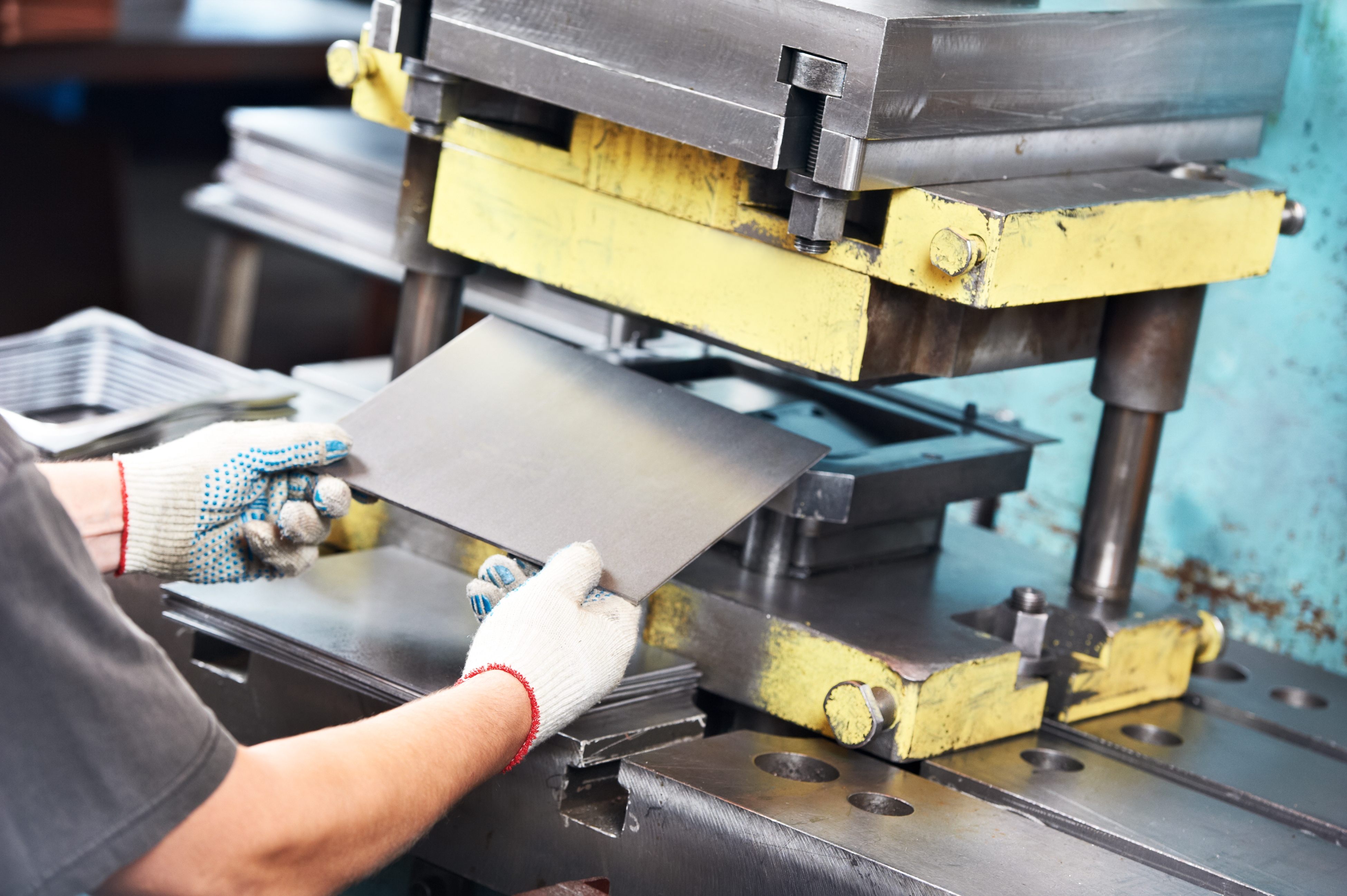

Posted: Jun 14, 2023
Metal stamping and fabrication are two distinct metalforming techniques used to create all kinds of products imaginable. From commonly used items like washers to high precision aerospace and medical parts, metal stamping and fabrication provide the range to do it all. Depending on your particular project requirements, one metal manufacturing method may be better than the other. So, what exactly are these metalforming techniques and in what ways do they differ? Let’s take a closer look to clearly define metal stamping and metal fabrication so we can better compare the two.
Metal stamping is precisely what it sounds like. It is a metalforming technique which utilizes a stamping press to transform sheet metal into specified shapes, or even fully formed parts in some cases. Metal stamping is sometimes also referred to as metal pressing and can include several operations such as bending, pressing, folding, or stretching sheet metal according to the necessary part specs.
The metal stamping process begins with material blanks (or flat sheet metal) that are fed into a stamping press to create the specified part. First, the feeding system guides the strip of metal through all the stations of the progressive stamping die. Each station performs a specific operation to get closer to the finished product – this most often includes die cutting and tooling. Die cutting is the process of shearing metal to remove excess material, while tooling is the process of forming the metal into a specific shape in a way that may or may not be reductive. In this way, skilled metal manufacturer’s stamping services can handle production for very simple components or even more complex assemblies.
There are two primary types of metal stamping: short run stamping and progressive stamping. A short run stamping operation is an economical way to produce parts in smaller quantities from prototype up to 100,000 pieces with relatively short lead times. In short run stamping, you use a mix of pre-made tools and custom tools in one-hit metal stamping stations. When you start on a short run stamping project, you essentially “start from scratch” needing only a schematic of the part you want to build. Typically, short run stampings are cheaper for one-off parts compared to progressive stamping.
Progressive stamping is typically what people envision when they think of manufacturing – instead of using a set of existing tools, you begin by crafting a part and then creating tools to stamp out exact copies of that same part from new pieces of metal. Progressive stampings are a much more economically viable solution if you find yourself needing to produce large quantities of the same part on more than one occasion. By creating progressive stamping tools, you can lower the production cost per part. Costs are further reduced by producing large batches of parts at a time, so if you are looking to produce a large quantity of items then progressive stamping would be the right choice for you.
Metal stamping is the most appropriate method when multiple copies of the same part are needed on more than one occasion.
Metal fabrication is a metalforming method which uses raw materials rather than blank sheets to create a finished part by removing excess material. This subtractive manufacturing process includes operations like creating cutouts, bending, or stretching the material in order to achieve the desired form. These operations are executed using a variety of industrial tools including lasers, turrets, and welders- all of which are available at Dayton Rogers. Metal fabrication offers superior versatility when compared to metal stamping, but the process can be very labor intensive and require many steps before the final product is complete. Although initial lead times can be shorter when it comes to producing custom parts, metal fabrication has a longer production time overall for large production runs due to the use of a combination of different machining processes. Another factor to consider is slightly higher material costs, which might not be an issue for small production runs or prototyping operations but should definitely be taken into account when producing a large amount of product. Finally, the ability to repeat a metal fabrication production run is more challenging in fabrication than in metal stamping operations, as deviations are more likely to occur in custom metal fabrication processes without the use of a stamping die.
Metal fabrication is a method best suited to produce parts with complex geometries or low production volumes.
Dayton Rogers has led the metalforming industry for more than 90 years, using stamping and fabrication expertise to create a wide array of parts for multiple applications. Our metal stamping and metal fabrication services create unique solutions that are integral to your project’s success. If you’re ready to discuss our available metalforming methods in a free consultation, don’t wait. Call today to speak to one of our metalforming experts about your project or schedule an in-person meeting.
Want to learn more about metal stamping and fabrication? Get your FREE copy of the Design Principles Red Book. This Design Principles booklet describes the various common conditions that occur in the fabrication of parts.
Dayton Rogers is your trusted resource for sheet metal fabrication, metal stampings, metalforming and all your manufacturing company needs. Get a free quote today on your custom metal fabrication project.
Custom Manufacturer Industries Served:
• Agriculture
• Aerospace/ Defense/ Firearms
• Construction
• Electric Vehicle
• Energy
• Industrial
• Medical
• Recreational
• Transportation
Locations:
• South Carolina
12223 C R Koon Hwy
Newberry, SC 29108
• Minnesota:
8401 West 35W Service Drive
Minneapolis, MN 55449
• Ohio
2309 McGaw Road West
Columbus, OH 43207
• Texas:
1107 Commercial Blvd N
Arlington, TX 76001
8401 West 35W Service Drive, Minneapolis, MN 55449-7260 1-800-677-8881
© 2022 Dayton Rogers. All rights reserved